
Launched back in January 2019, the ASUS ROG Strix Scar II alongside the Hero II were the first notebooks from ASUS ROG to come with NVIDIA’s latest RTX video cards. Aside from the new GPUs and increased screen size, there isn’t much that has changed from the previous Scar II and Hero II notebooks.
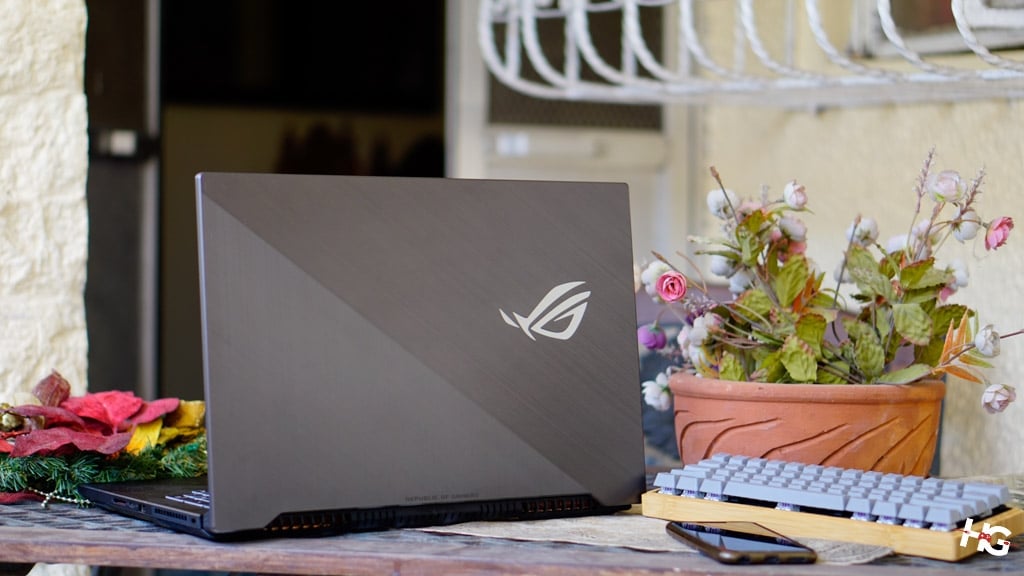
Will a GPU and monitor upgrade be enough to warrant a brand new notebook or is it more economical to stick with a notebook with a GTX 1000-series GPU? Let’s find out.
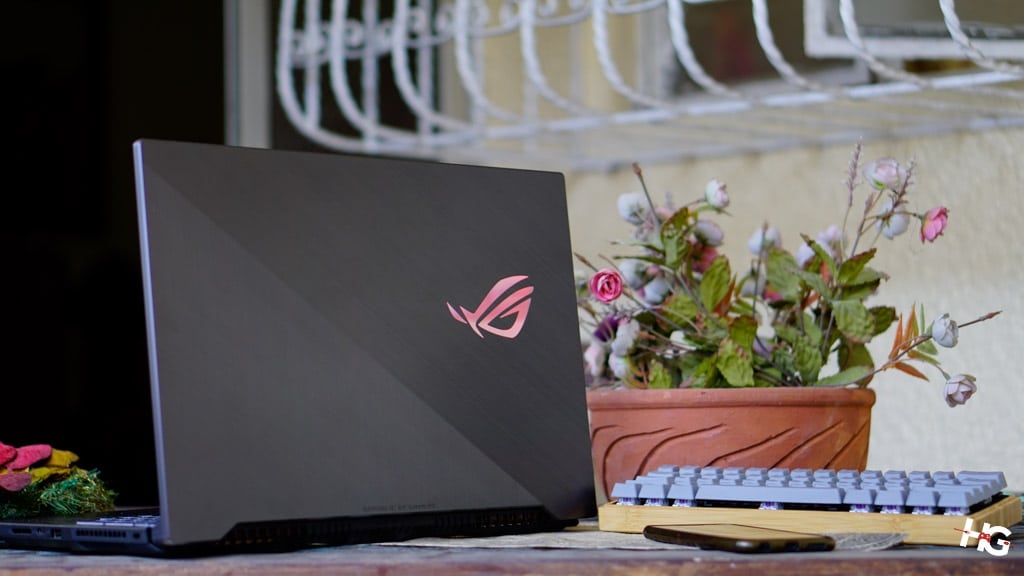
| CPU | Intel Core i7-8750H |
| OS | Windows 10 Home |
| GPU | NVIDIA GeForce RTX 2070 8GB |
| RAM | Up to 16GB DDR4 2666MHz |
| Display | 17.3-inch, Non-Glare, 1920 x 1080, IPS-Level, 144Hz, 3ms, 100% sRGB |
| Storage | 256GB M.2 NVMe PCIe 3.0, 1TB SSHD |
| I/O Ports | 1x USB3.1 Gen2 Type-C, 1x USB 3.1 Gen2 Type-A, 3x USB 3.1 Gen2 Type-A, 1x Mini DisplayPort 1.2, 1x HDMI 2.0b, 1x RJ-45 Ethernet, 1x SD Card Reader, 1x 3.5mm Audio Jack |
| Connection | 802.11ac 2×2 WiFi, Bluetooth 5.0 |
| Weight | 2.9kg |
| Dimensions | 26.4 x 399.8 x 273.5 (HWD) |
| Battery | 66Wh, 4-Cell, 230W Power Adaptor |
| Others | 2x 1W Speaker with Smart AMP, Array Microphones, Backlit Chiclet Keyboard, Armory Crate |
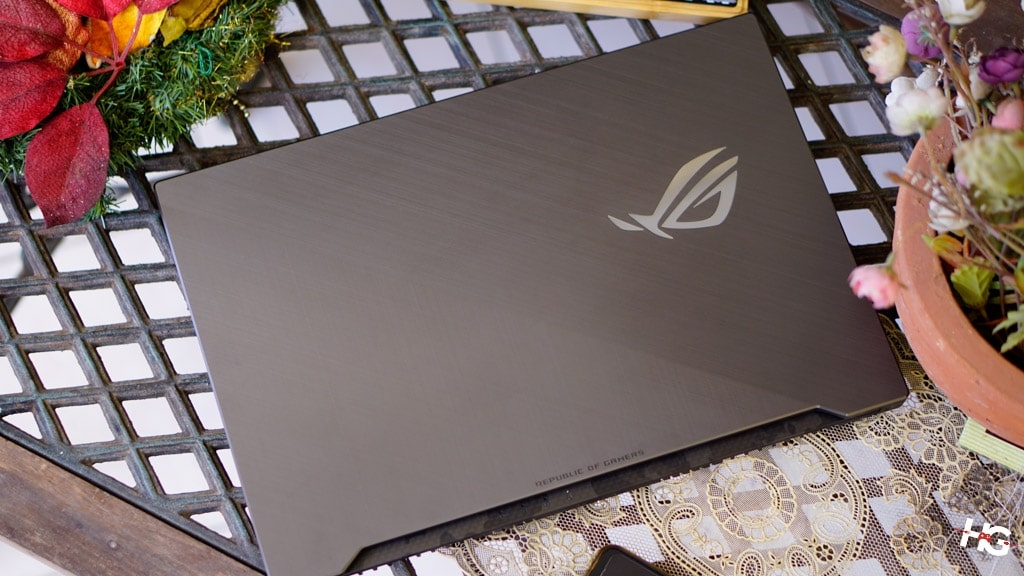
The ASUS ROG Strix Scar II GL704GW shares the same design language found on the original Scar II. The top chassis is clad with brushed aluminum accentuated by the ROG logo, which lights up in RGB.

The display still comes with a trapezoid cutout at the bottom to allow its dual 12v fans to exhaust hot air out from the back. The fans come with self-cleaning anti-dust tunnels that expel dust from the innards of the notebook to keep it clean for longer periods of time.
Although the ASUS ROG Strix Scar II GL704GW has a larger screen that its sibling, the GL504, it hasn’t gain much in terms of size. Measuring in at 39.98 x 27.35 x 2.64cm, the notebook can be roughly compared to an older 15.6-inch notebook in terms of size.
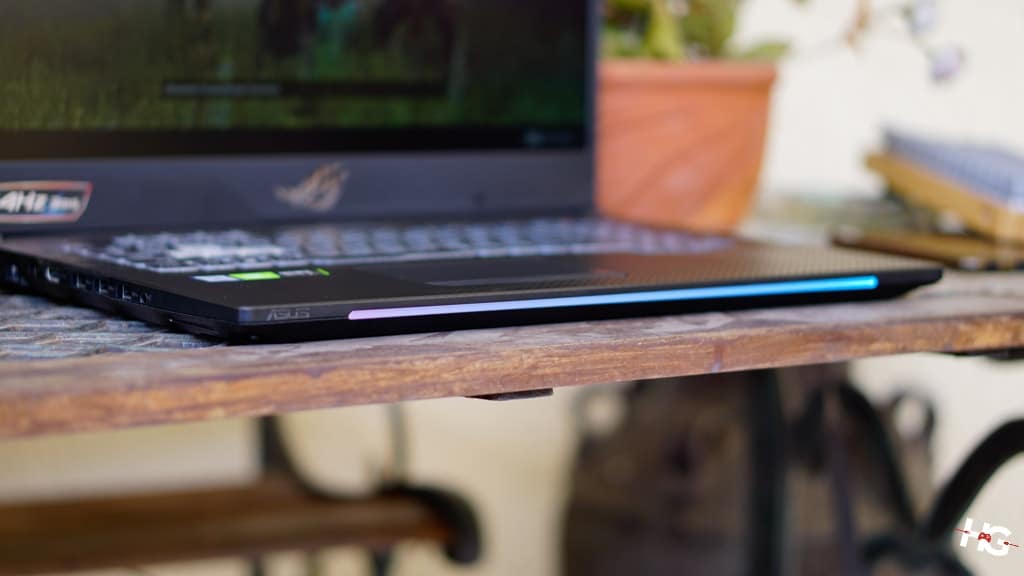
At the bottom of the chassis is the notebook’s light bar. It doesn’t really do anything aside from adding a bit of RGB flair on the notebook. Both the RGB ROG logo and the light bar can be managed via the Armoury Crate.
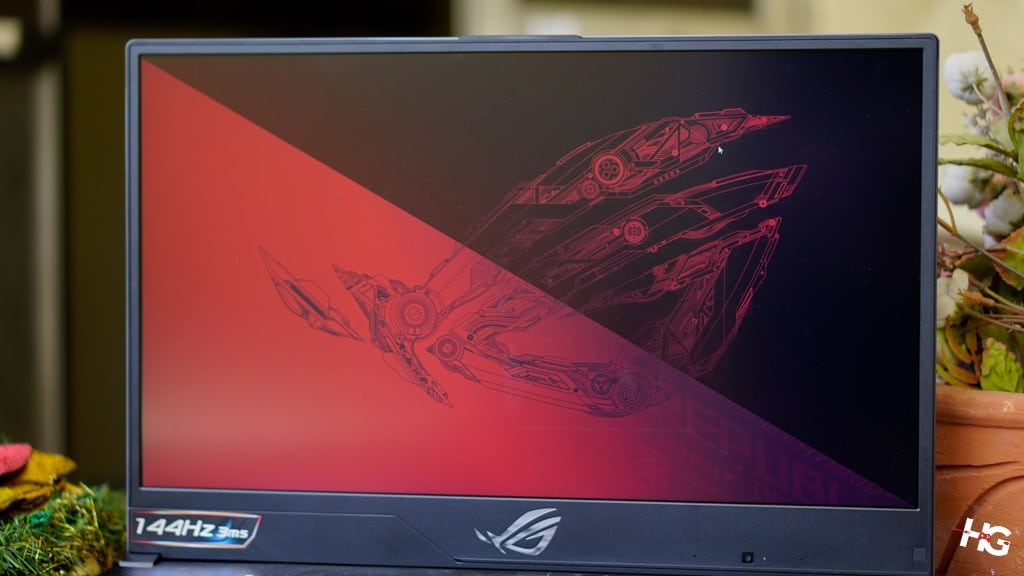
Speaking of the display, the notebook comes with a 17.3-inch display with anti-glare coating with a resolution of 1920 x 1080. As a gaming notebook, its display runs at a refresh rate of 144Hz and 3ms response time.
Despite not being a native IPS screen, the notebook’s display is still able to reproduce 100% sRGB colors and decent viewing angles. ASUS ROG was able to decrease the notebook’s dimensions by minimizing the bezels on the display.
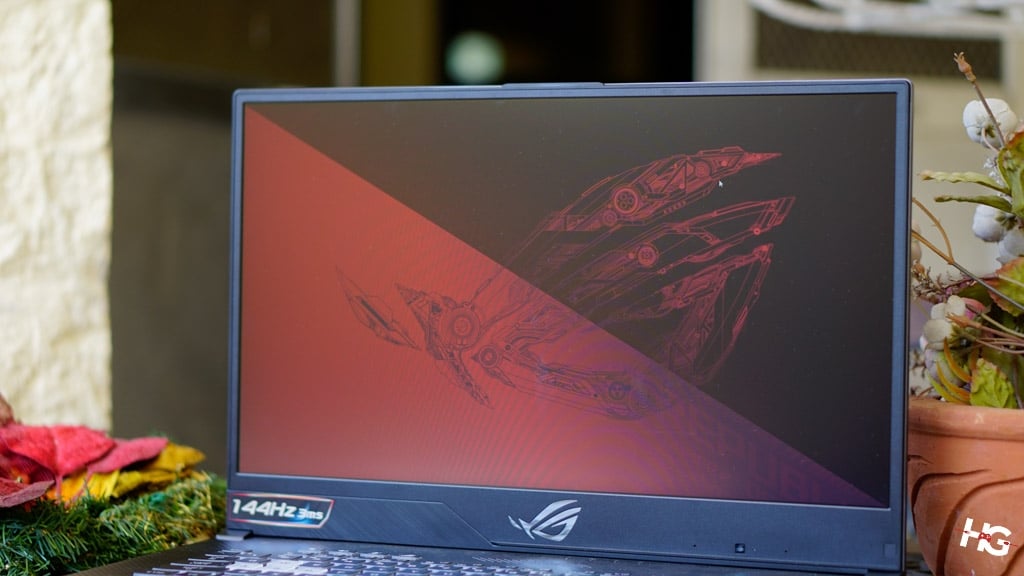
The anti-glare coating does a good job of keeping reflections away from the screen. Although you might find that it will still produce reflections on the harshest of light.
The display didn’t produce any ghosting on fast-paced action while still producing well-saturated colors. Editing color intensive content like videos and photos are also possible with the notebooks since its screen is capable of producing 100% of the sRGB color space.
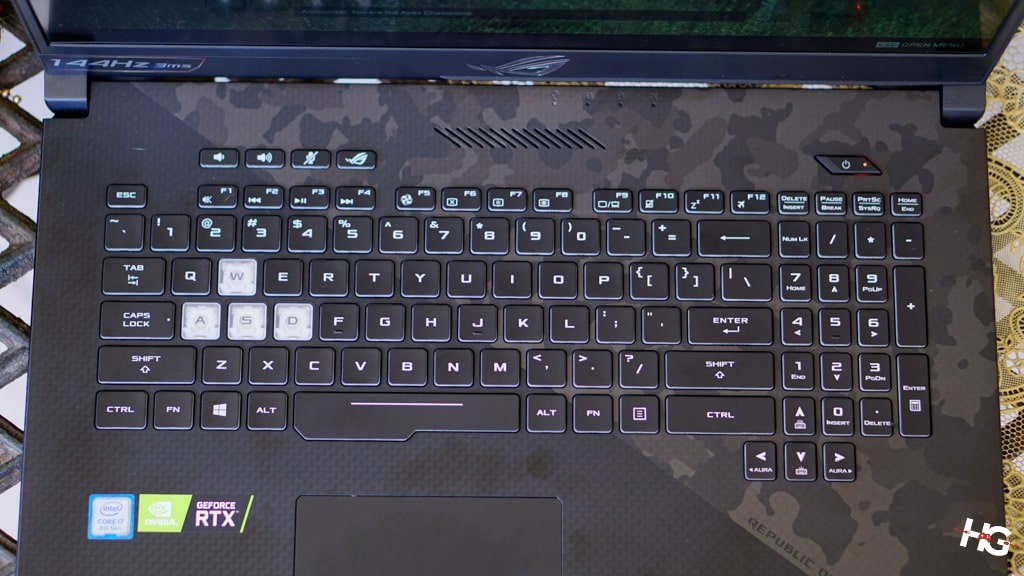
ASUS ROG hasn’t changed the keyboard with the GL704GW compared to its previous outings. Like the GTX-powered Scar II before it, the GL704GW comes with an RGB-lit Chiclet style keyboard.
The .25mm curved keycaps do help in defining each key from the other. The keyboard has a life expectancy of 20 million actuations. The keyboard also supports N-key rollover to allow gamers to press as many keys they like without dropping any input.

The ASUS ROG ROG Strix Scar II GL704GW mainly differentiates itself from the Hero II by the keyboard design. Instead of highlighting the QWER zone, the Scar II has the WASD area highlighted for shooters.

RGB-lighting is comprehensive and the notebook supports AURA Sync so users can synchronize the lighting to all AURA Sync-compatible peripherals and devices. Unfortunately, the keyboard doesn’t support per-key lighting. Instead, it only supports four zones of lighting that users can mix and match via the Armoury Crate.
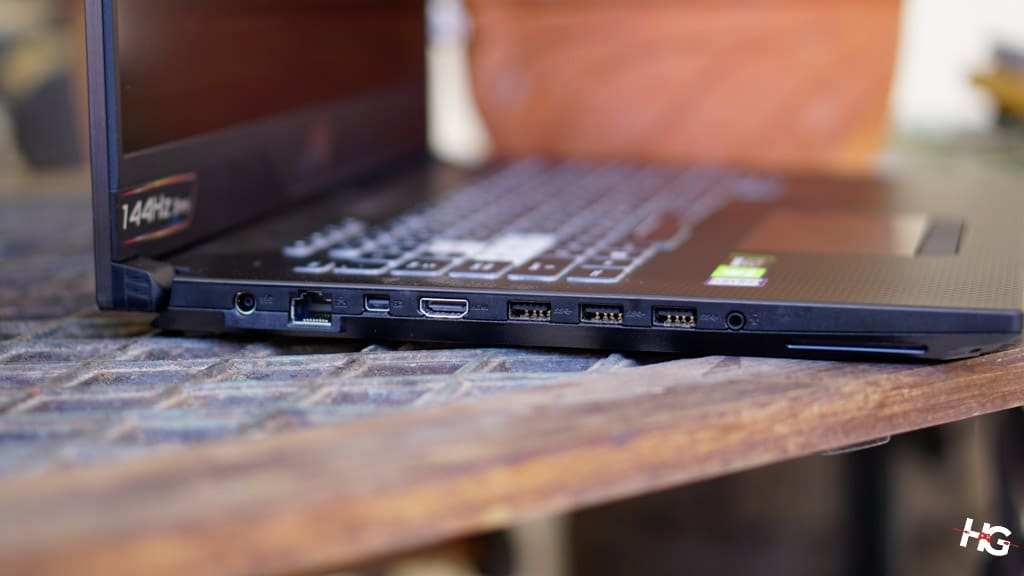
Ports on the ASUS ROG Strix Scar II GL704GW is standard fare. At the left-hand side of the notebook are its AC/DC input, an Ethernet port, a miniDisplayPort 1.4, an HDMI 2.0b port, three USB 3.1 Gen1 ports, and a single 3.5mm audio jack.
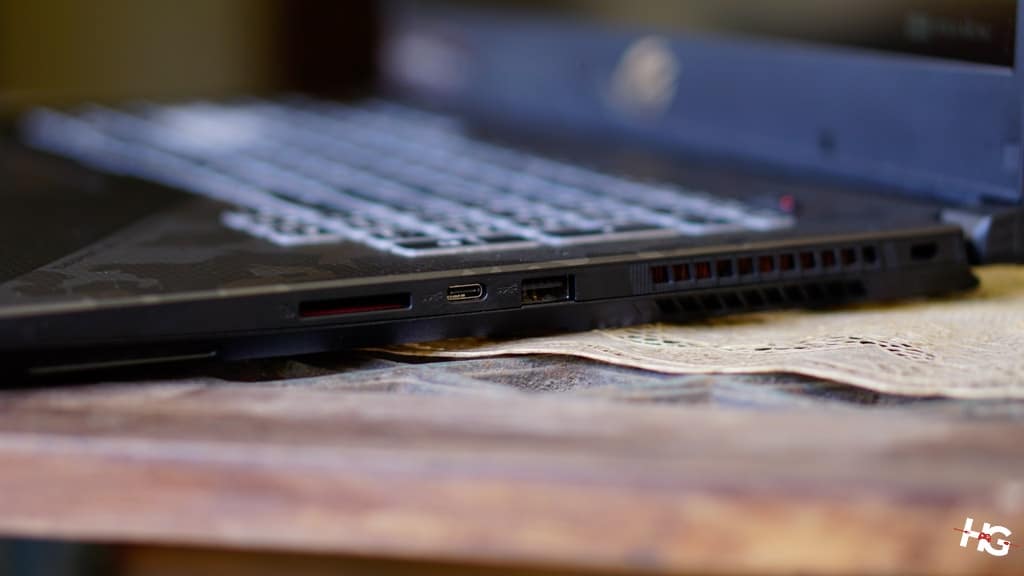
The other side is a bit less populated. It only houses three ports: a USB 3.1 Gen2 Type-C port, a single USB 3.1 Gen2 Type-A port, and an SD card reader.
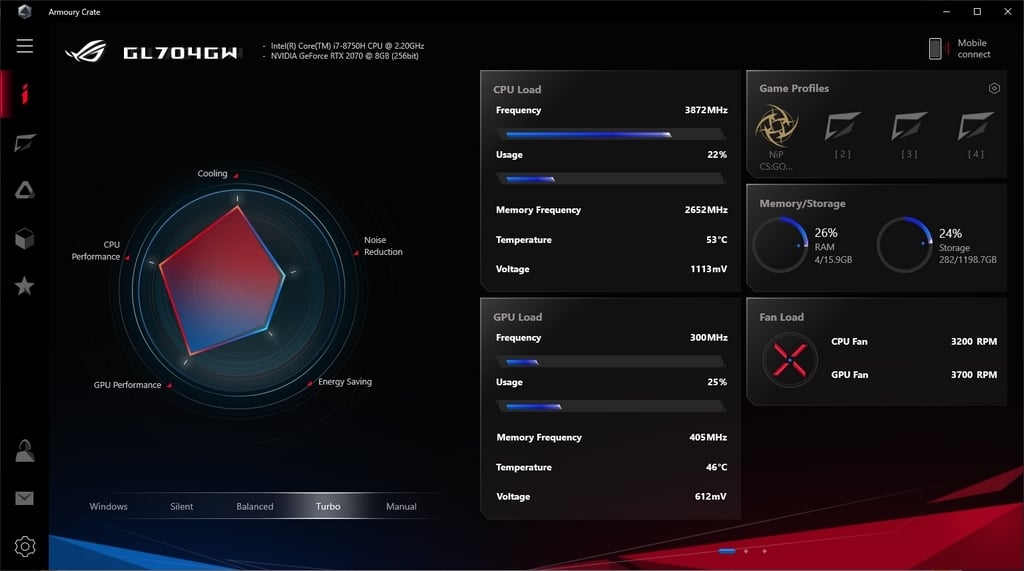
The ASUS ROG Strix Scar II GL704GW automatically comes with the brand’s Armoury Crate. Its home page shows all the important information about the notebook. This includes the model, CPU frequency and usage, GPU load, RAM and storage capacity, various temperature readings, and fan speeds.
Users can also change profile on the fly with the Armoury Crate. Manual tweaking is also possible to give gamers complete control over the notebook’s performance.
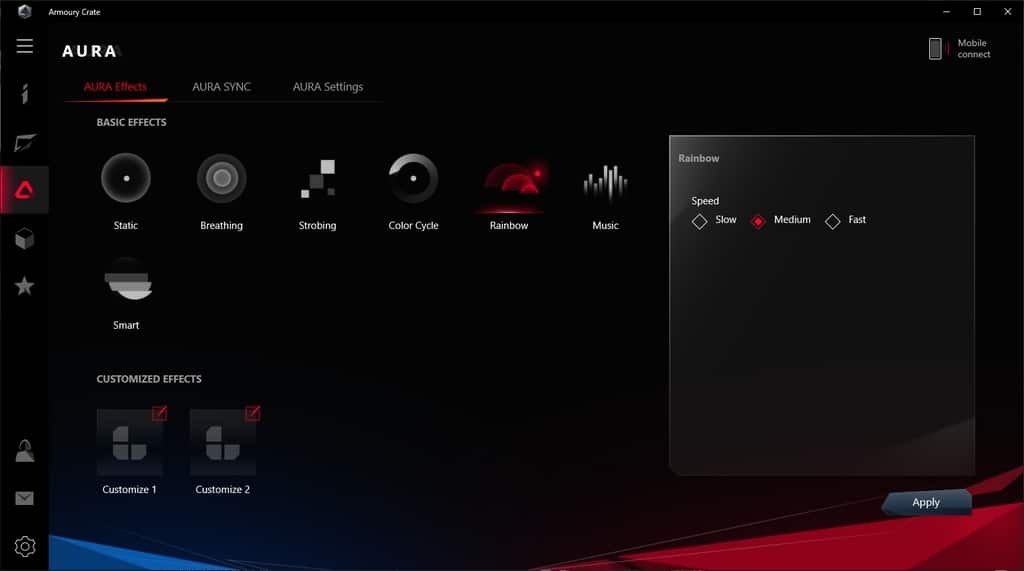
There are a few lighting presets available. Standard options like Static, Breathing, Strobing, Color Cycle, and Rainbow are given to the user. The notebook can even follow the tune of the music its currently playing.

Of course, custom settings are available. A total of six independent zones are accessible: the ROG Logo, the Light Bar at the bottom, and the four keyboard zones.
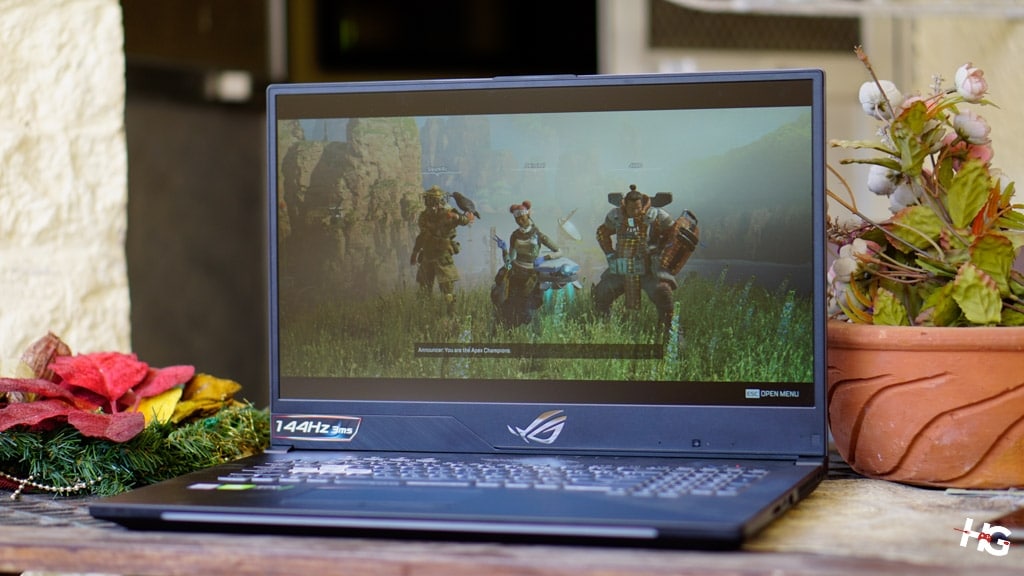
The ASUS ROG Strix Scar II GL704GW is powered by an Intel Core i7-7850H processor, up to 32GB of DDR4 RAM (depending on the model) running at 2666MHz, and an NVIDIA GeForce RTX 2070 GPU.
Depending on the model, the notebook can be fitted with a 256GB/512GB/1TB M.2 NVMe SSD. Every model will come with a 2.5-inch 1TB 5400rpm SSHD as standard.
As standard, we put the ASUS ROG Strix Scar II GL704VW through a couple of benchmark programs and games to test its CPU and GPU performance.
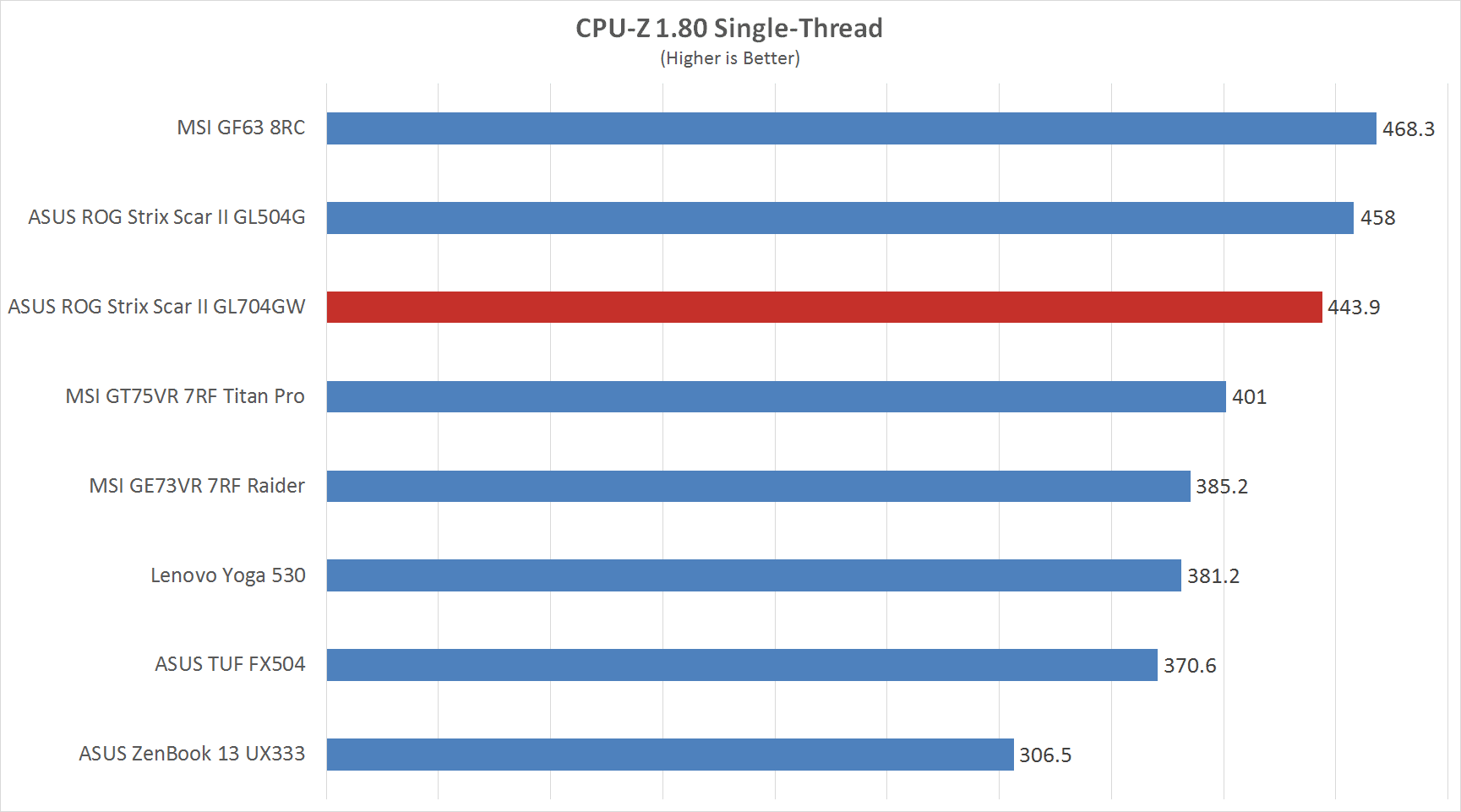
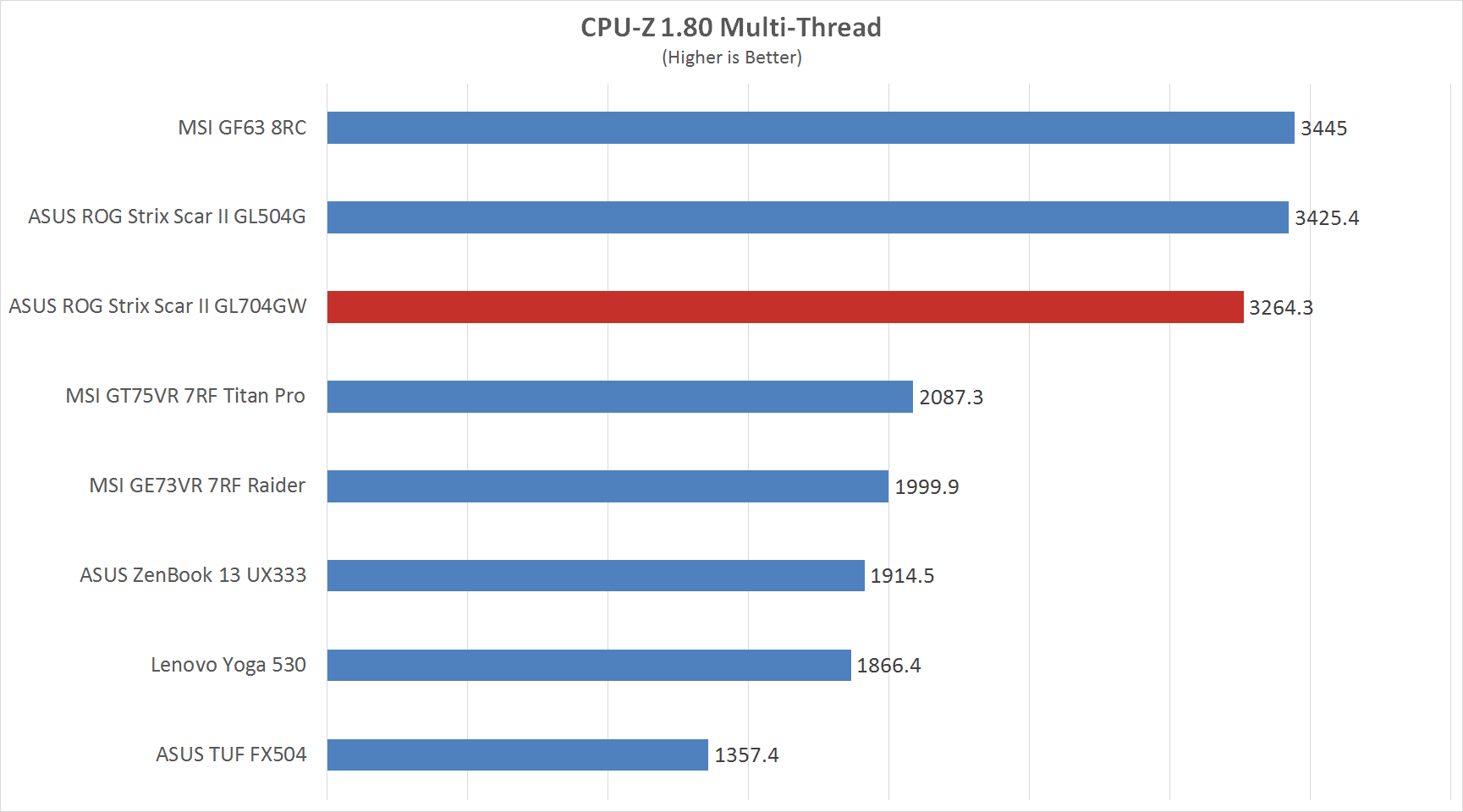
“CPU-Z is a freeware that gathers information on some of the main devices of your system such as processor name and number, codename, process package, cache levels, mainboard and chipset, as well as memory type, size, timings, and module specifications. It also offers real time measurement of each core’s internal frequency and memory frequency.”
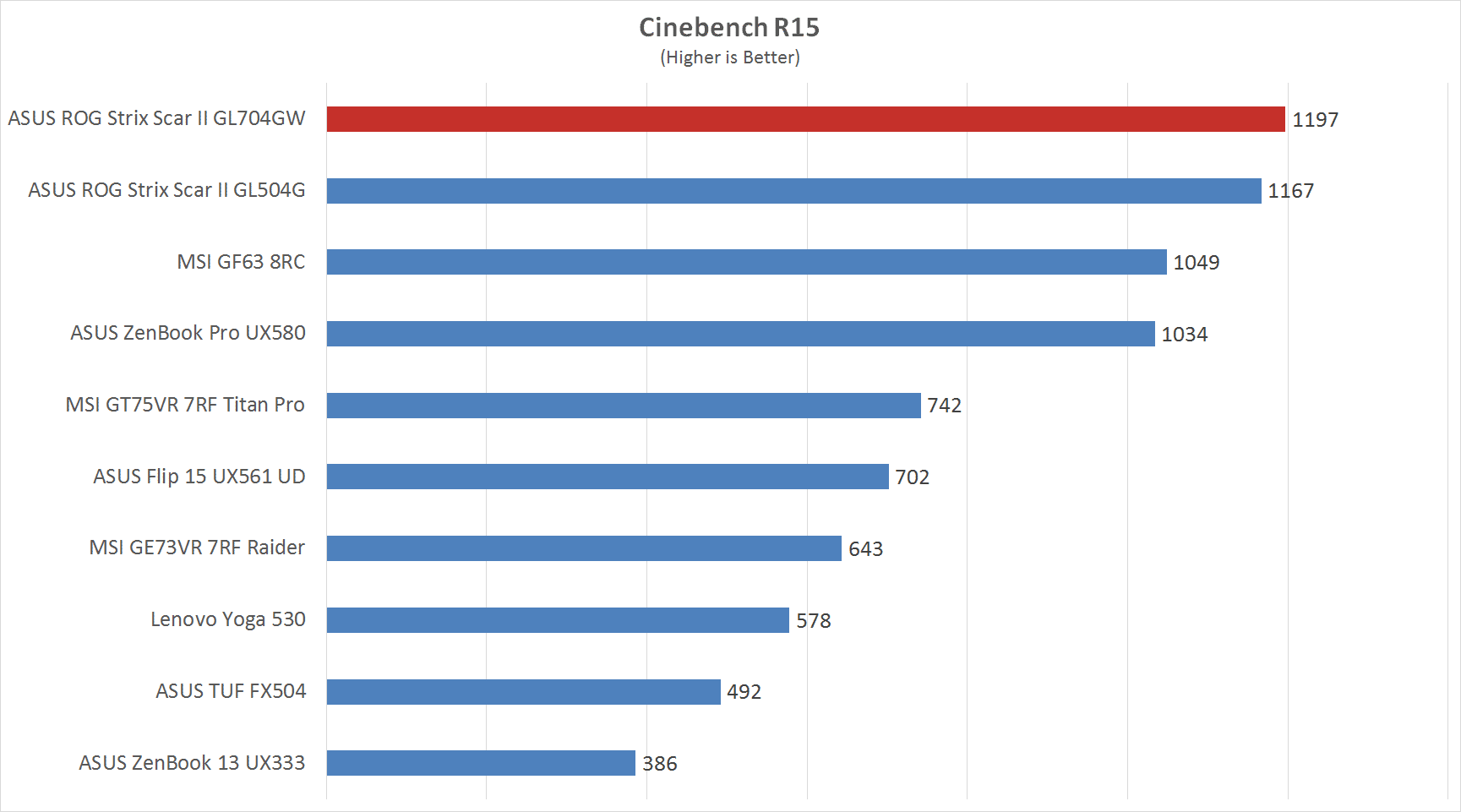
“Cinebench R15 CPU test scenario uses all of your system’s processing power to render a photorealistic 3D scene. This scene makes use of various algorithms to stress all available processor cores. In fact, CINEBENCH can measure systems with up to 256 processor threads.This test scene contains approximately 2,000 objects which in turn contain more than 300,000 polygons in total, and uses sharp and blurred reflections, area lights, shadows, procedural shaders, antialiasing, and much more. The result is displayed in points (pts). The higher the number, the faster your processor.”
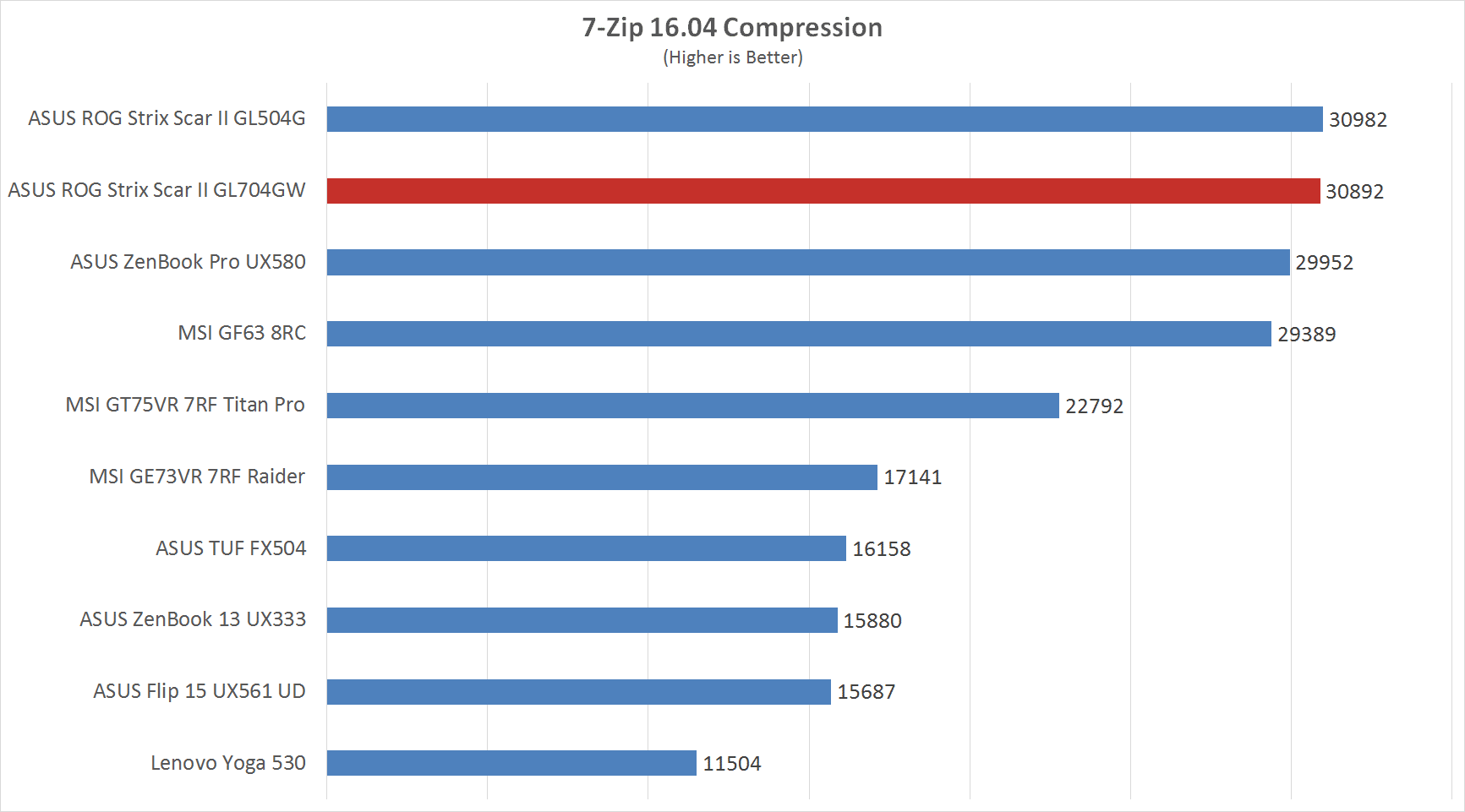
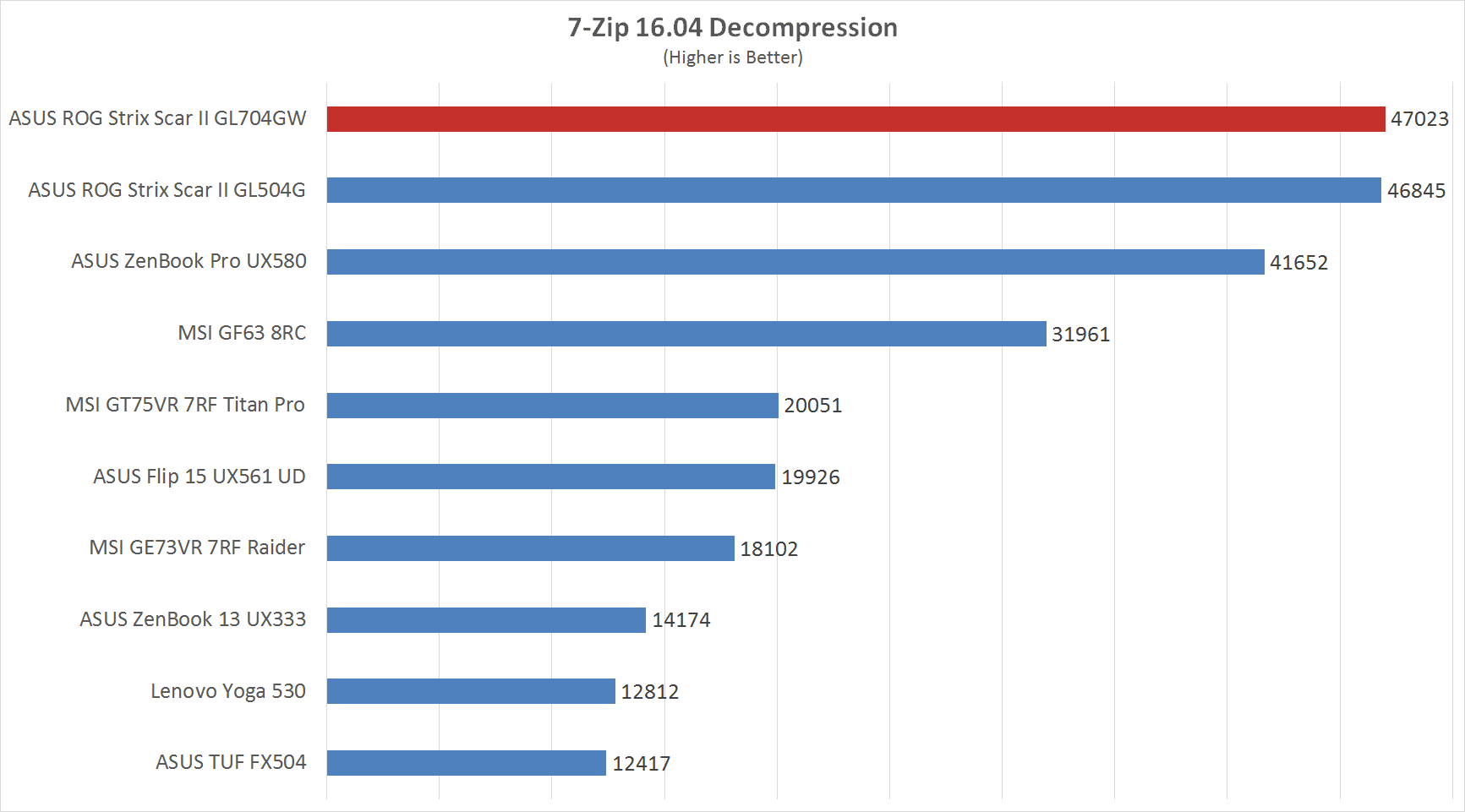
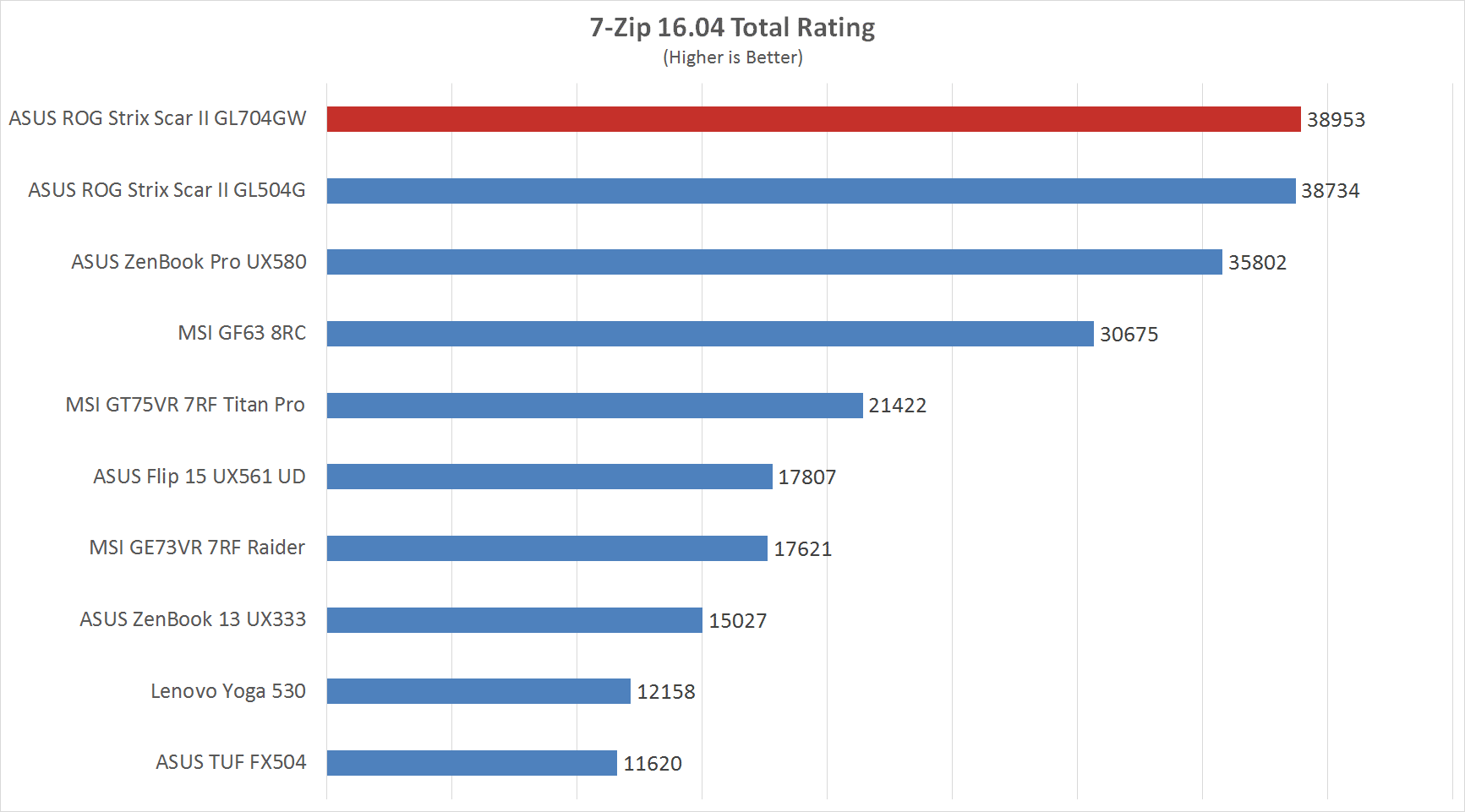
“7-Zip is a file archiver with a high compression ratio for ZIP and GZIP formats, which is between 2 to 10% better than its peers, depending on the exact data tested. And 7-Zip boosts its very own 7z archive format that also offers a significantly higher compression ratio than its peers—up to 40% higher.”
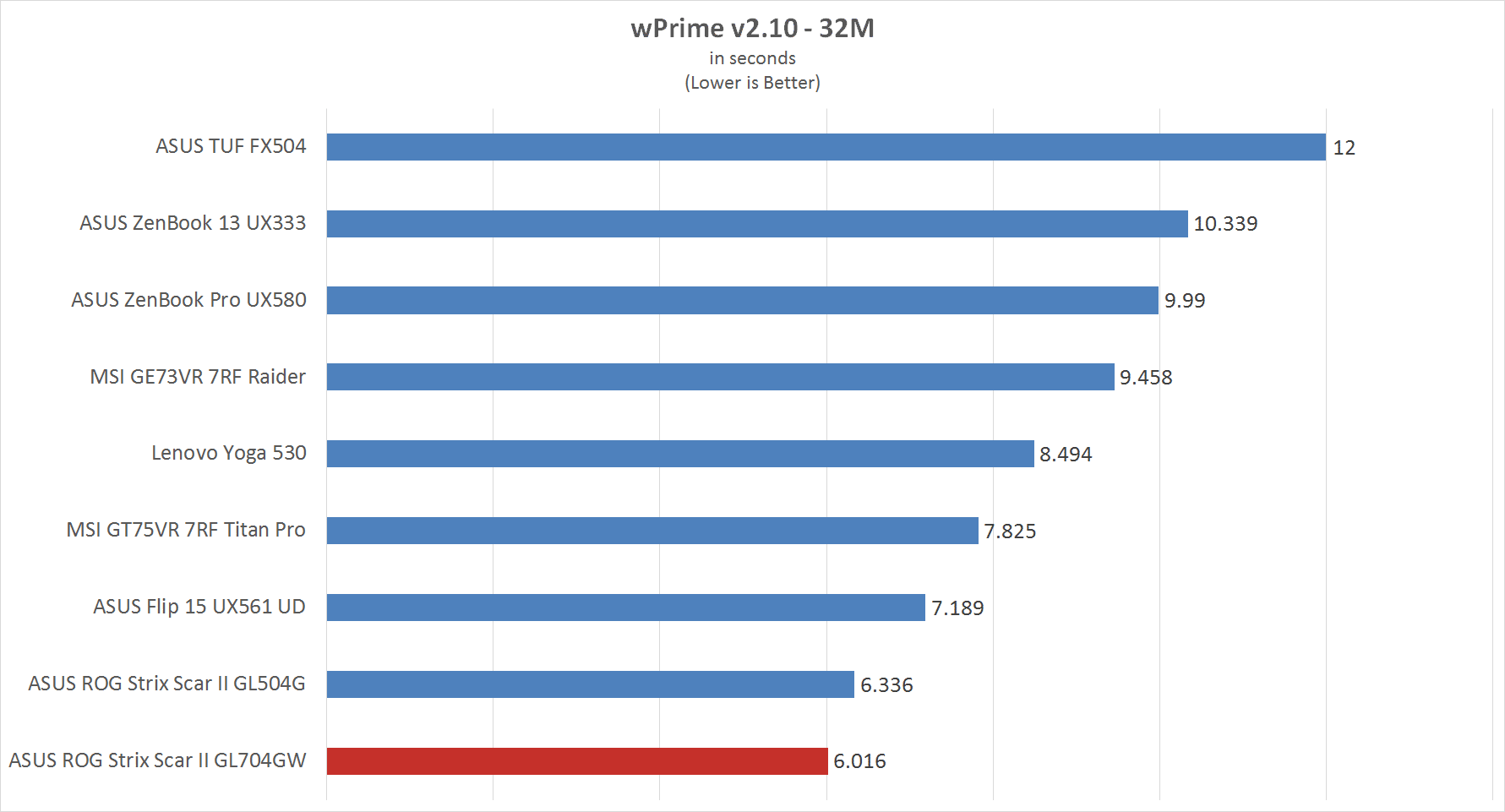

“wPrime is a leading multithreaded benchmark for x86 processors that tests your processor performance by calculating square roots with a recursive call of Newton’s method for estimating functions, with f(x)=x2-k, where k is the number we’re searching, until Sgn(f(x)/f'(x)) does not equal that of the previous iteration, starting with an estimation of k/2. It then uses an iterative calling of the estimation method a set amount of times to increase the accuracy of the results. It then confirms that n(k)2=k to ensure the calculation was correct. It repeats this for all numbers from 1 to the requested maximum.”
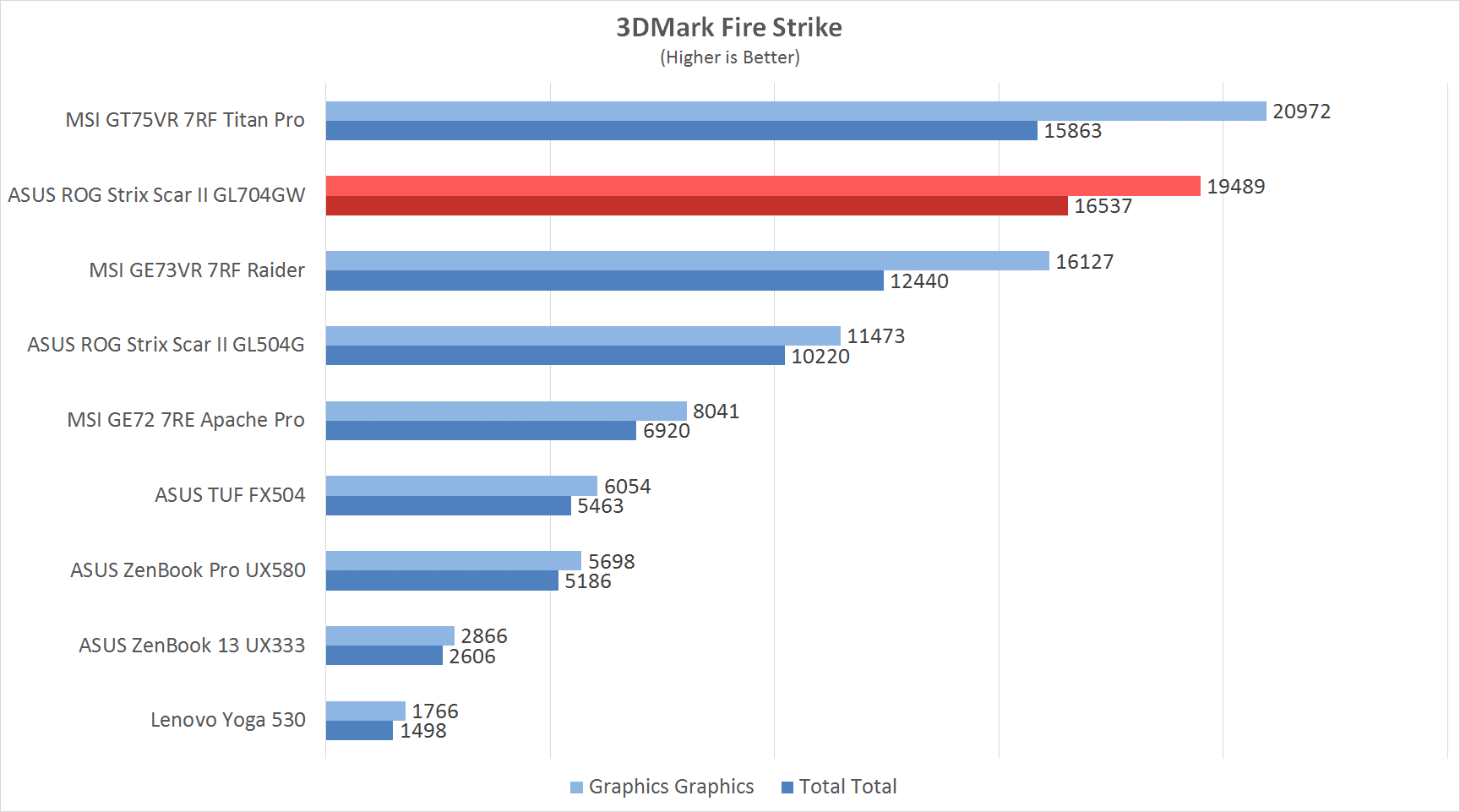
“Designed to showcase the DirectX 11 API, the Futuremark 3DMark Firestrike became a standard in benchmarking as it not only tests the capabilities of the GPU, but also the capabilities of the whole system for a complete stress test.”
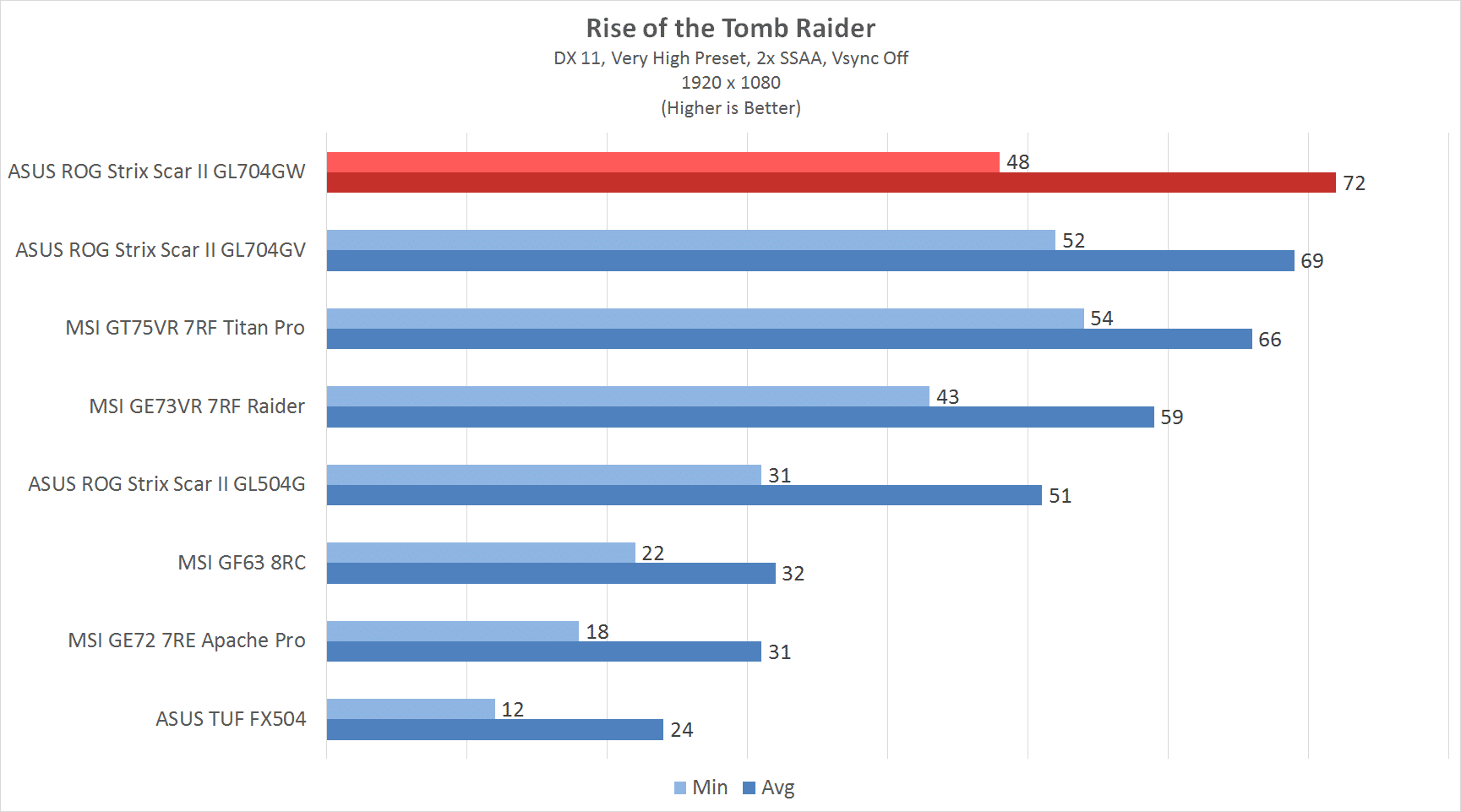
“A follow-up to the reboot of the series, Lara is now searching for a lost treasure that his father was investigating before his passing. Following the same gameplay as Tomb Raider reboot from 2013, the Rise of the Tomb Raider is a worthy title under the Tomb Raider series.”
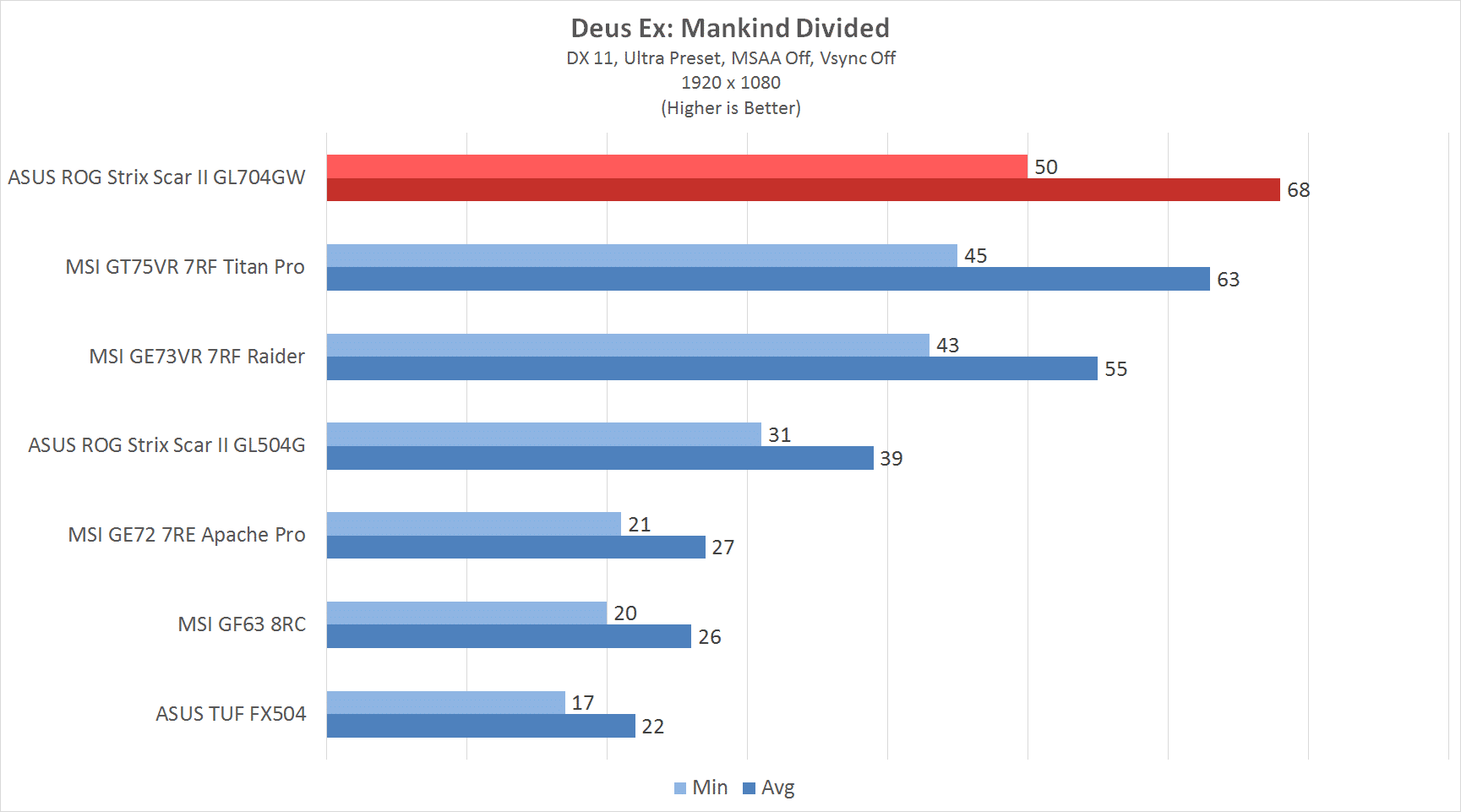
“Now an experienced covert operative, Adam Jensen is forced to operate in a world that has grown to despise his kind. Armed with a new arsenal of state-of-the-art weapons and augmentations, he must choose the right approach, along with who to trust, in order to unravel a vast worldwide conspiracy.”
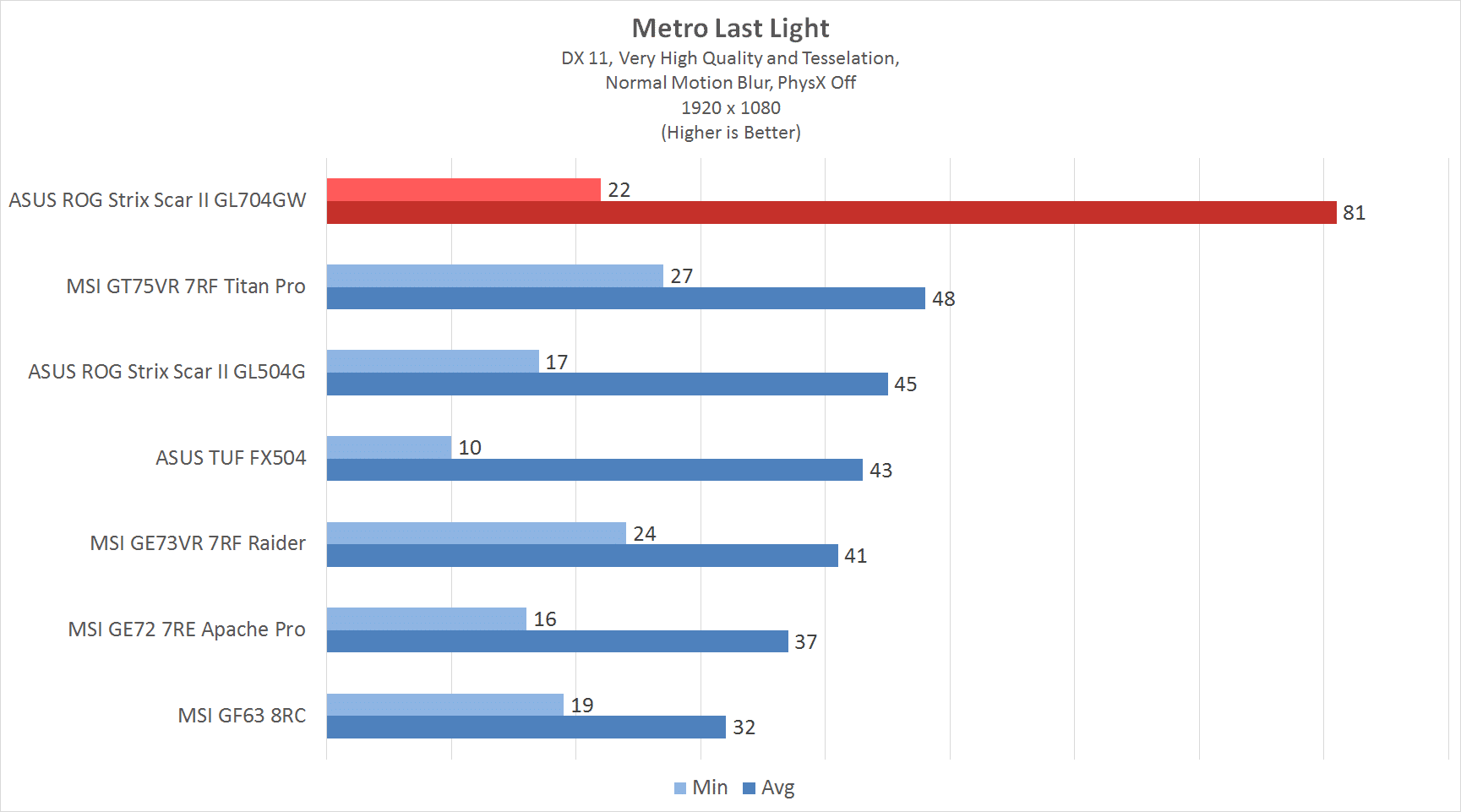
“It is the year 2034. Beneath the ruins of post-apocalyptic Moscow, in the tunnels of the Metro, the remnants of mankind are besieged by deadly threats from outside – and within. Mutants stalk the catacombs beneath the desolate surface, and hunt amidst the poisoned skies above.”

“There is a world beyond ours. Beyond nations, justice, ethics. It never sleeps. It exists everywhere. And once you enter…there is no going back. Welcome to the World of Assassination. You are Agent 47, the world’s ultimate assassin.”
Since both the ASUS ROG Strix Scar II GL704GW and the Scar II GL504G share the same processor, they produce almost the same numbers in CPU-intensive programs like 7-Zip, Cinebench R15, and CPU-Z.
GPU performance, however, is a different story. In most benchmarks, the GL704GW was able to blow away the competition. Thanks to its NVIDIA GeForce RTX 2070 video card, the notebook was able run all games at a more-than-playable framerate.
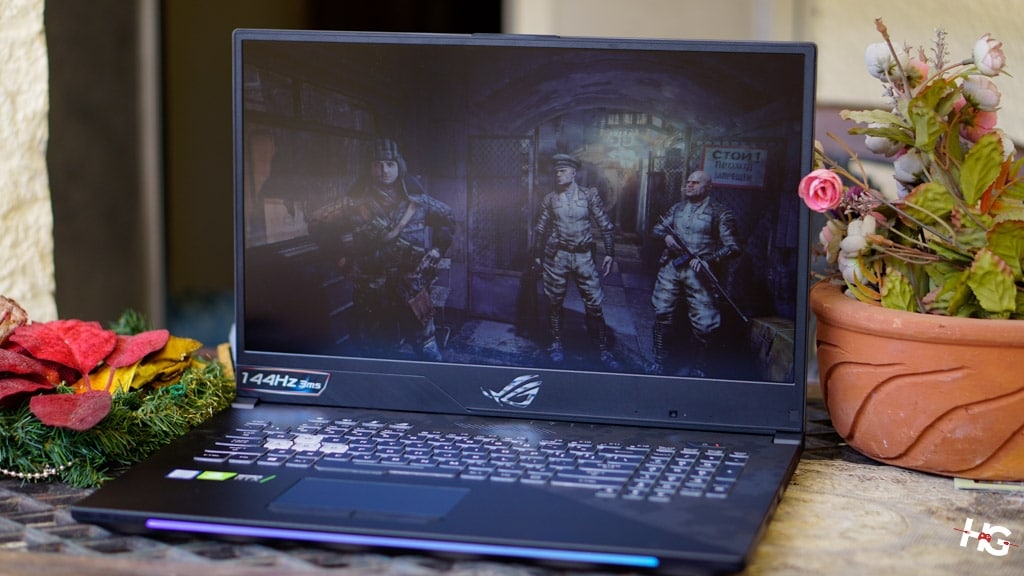
In terms of design, the ASUS ROG Strix Scar II GL704GW doesn’t separate itself that much from existing offerings from the brand. The notebook has the same brushed aluminum chassis and RGB implementation.
Although the Armoury Crate is newer compared to previous software implementations from ASUS, it doesn’t bring much to the table in terms of functionality. Most options like profile switching and RGB controls are available in both software.
Processor performance is the same as last generation’s Scar II since both devices have Intel’s Core i7-8750H CPU. GPU performance, however, is massively improved from the GTX 1070 from the GL504G.
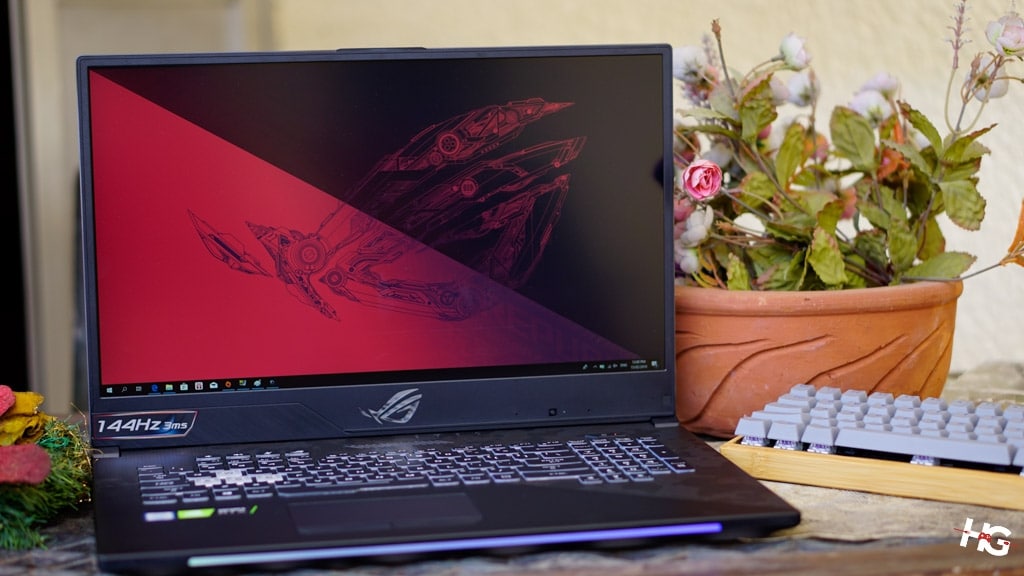
As you have seen on our benchmarks, the ASUS ROG Strix Scar II GL704GW was able to run all our Triple-A game benchmarks with ease. The device comfortably stays above the 60fps mark aside from a couple of instances.
We go back to our original question: is it more economical to stay on a GTX 1000-series powered notebook? Well, that depends. If you’re only playing games with low GPU requirements like MOBAs and competitive shooters then there’s little reason to upgrade to a newer notebook.
If you, however, like staying on top of what’s new like NVIDIA’s Ray Tracing and DLSS technologies then the ASUS ROG Strix Scar II GL704GW will be a direct upgrade from previous outings from the brand.
The notebook does have quite an asking price. Marked at PhP 149,995, the ASUS ROG Strix Scar II GL704GW is a major investment for a gaming notebook.

With its potential of running most games without breaking a sweat, we will be giving the ASUS ROG Strix Scar II GL704GW our 100% Satisfying Gaming Notebook award. If you want to play all the latest games at the highest possible settings, then this notebook should be a sure buy.
